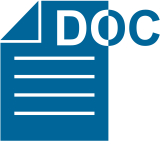GEOKIMIA ORGANIK DAN KANDUNGAN MINYAK PADA SERPIH SILAT, DI DAERAH NANGA SILAT, KABUPATEN KAPUAS HULU, PROVINSI KALIMANTAN BARAT
Abstract
Serpih minyak merupakan salah satu sumber energi alternatif pengganti minyak bumi konvensional. Di Indonesia, serpih minyak tersebar di banyak tempat, salah satunya Serpih Silat berumur Eosen Atas. Penelitian geokimia organik dan kandungan minyak yang dilakukan pada Serpih Silat di daerah Nanga Silat, Kapuas Hulu bertujuan untuk mengetahui kelimpahan, tipe, kematangan termal, kuantitas minyak, asal mula dan lingkungan pengendapan material organik yang terkandung di dalam conto batuan. Metode yang dipakai adalah menganalisis, mengkompilasi, dan mengestimasi data hasil analisis TOC (Total
Organic Carbon), retort, pirolisis, ekstraksi dan GC (Gas Chromatography). Plot silang antara TOC terhadap PY, HI terhadap OI, dan T terhadap HI dan hasil analisis retort memperlihatkan bahwa material organik memiliki potensi yang baik hingga sangat baik untuk menghasilkan hidrokarbon, merupakan kerogen Tipe II (oil prone) dan Tipe III (gas prone), berada pada tahap awal matang, dan jumlah rata-rata kandungan minyak yang dihasilkan sebesar 4,55 liter/ton batuan. Dari hasil analisis kromatografi diperoleh bentuk konfigurasi alkana normal dua puncak (bimodal) yaitu C17 dan C27, C17 dan C28, serta C17 dan C23, serta Plot silang antara pristana/nC17 dan fitana/nC18 mengindikasikan adanya kontribusi material organik asal tumbuhan tinggi/darat dan alga lakustrin/laut pada kondisi oksidasi dan reduksi.
Downloads
References
Anonim, 2008. Laporan penyelidikan lanjutan bitumen padat di daerah Nanga Silat dan sekitarnya, Kabupaten Kapuas Hulu, Provinsi Kalimantan Barat, Pusat Sumber Daya Geologi, Badan Geologi, Bandung.
Dyni, J.R., 2006. Geology and resources of some world oil-shale deposits, Scientific investigation report 2005-5294, United States Geological Survey, Reston, Virginia.
Harahap, Bhakti, H., Syaiful B., Baharuddin, Suwarna N., Panggabean H., Simanjuntak T.O. 2003. Stratigraphic Lexicon of Indonesia, (Special Publi-cation No. 29), Geological Research and Development Centre, Bandung.
Heryanto, R., Harahap, B.H., Sanyoto, P., Williams, P.R., Pieters, P.E., 1993. Peta Geologi Lembar Sintang, Kalimantan, Pusat Penelitian Dan Pengembangan Geologi,Bandung.
Hutton, A.C., 1987. Petrographic classification of oil shales : International Journal of Coal Geology, 203-231, Elsevier science publisher B.V., Amsterdam.
Lee, Sunggyu, Speight, J.G., Loyalka, S.K., 2007. Handbook of alternative fuel technologies, CRC Press, Taylor and Francis Group.
Margono, U., Sujitno, T., Santosa, T. 1995, Peta Geologi Lembar Tumbanghiram, Kalimantan, Pusat Penelitian dan Pengembangan Geologi, Bandung.
Peters, K.E., Cassa, M.R., 1994. Applied source rock geochemistry: The petroleum system from source rock to trap, American Association of Petroleum Geologist, Memoirs 60.
Philp, R.P., 1985. Biological markers in fossil fuel production, In: Beaumont, E.A. and Foster, N.H. (eds), Geochemistry, 337-390.
Tissot, B.P.,Welte, D.H., 1984. Petroleum formation and occurance, Springer Verlag, Berlin.
Waples, D.W., 1985. Geochemistry in petroleum exploration, International Human Resources Development Coorporation, Boston.
Yen, T.F., Chilingarian, G.V., 1976. Oil Shale, Elsevier, Amsterdam.
Copyright (c) 2018 Buletin Sumber Daya Geologi

This work is licensed under a Creative Commons Attribution-NonCommercial-ShareAlike 4.0 International License.
Authors whose manuscripts are published agree to the following terms:
The publication rights of all journal manuscript materials published on the Buletin Sumber Daya Geologi website are held by the editorial board with the knowledge of the author (moral rights remain with the manuscript’s author).
The formal legal provisions for access to digital articles in this electronic journal are subject to the terms of the Creative Commons Attribution-ShareAlike (CC BY-SA) license. This means that Buletin Sumber Daya Geologi has the right to store, convert media/formats, manage in the form of a database, maintain, and publish the article without requesting permission from the author, as long as the author’s name is cited as the copyright holder.
Manuscripts published in both print and electronic formats are open access for educational, research, investigative, and library purposes. Beyond these purposes, the editorial board is not responsible for any violations of copyright law.















